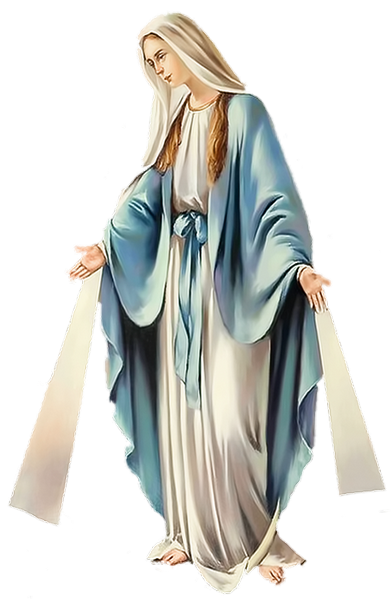 |
She is honoured all over Corsica in works of art of different periods that are credited with miraculous powers.
All are supposed to have come from the sea, and several are believed to have been found by fishermen, who play a
privileged role in these legends in the likeliness of Christ's disciples.
At Lavasina, on the eastern seaboard of Cap Corse, a sixteenth-century painting of the Virgin and Child in
the manner of Perugino was apparently offered as an ex-voto by shipwrecked mariners. It is still believed to protect
seafarers.
How exactly a beautiful painting of the Virgin and Child reached the Franciscan monastery at Alesani, the base, for
a time, of the militant Giovannali, has been forgotten. Attributed tot the fifteenth-century Sienese artist Sano di
Pietro it was presumably the gift of a wealthy benefactor. This image, too, is thought to possess miraculous powers.
A baroque wooden statue of the Virgin in the parish church of Fozzano, the vendetta-wracked village that
inspired Prosper Mérimée, was found, it is said, by fishermen in the Gulf of Valinco, floating on the waves.
She was so heavy that no one could lift her until two old men, come down from Fozzano, raised her without effort on their
shoulders and carried her back to their village, where she has remained in the parish church, author of many miracles.
In fact there is documentary proof that the statue was commissioned from a sculptor of Ajaccio in 1635; but the legendary
tale is preferred.
Another statue of the Virgin, of white marble, found washed up on the east coast sands, was miraculously conveyed to a mountaintop where she is still venerated by the people of Cervione. On August 15th there is a mass to her honour. Yet another figure, the celebrated "Santa" (see article The Festival of A Santa di Niolu),
a large painted wooden statue of the Virgin and Child, paraded at the fair of Casamaccioli on 8th September, was
mysteriously transported from the west coast to this village in the heart of the Niolo. Following the procession
Dorothy Carrington watched the men crowded round the roulette tables doff their cloth caps and wide-brimmed black
felt hats as the venerated figure was carried by.
The Virgin was upheld in opposition to the aggressive forces of male-dominated customs. Very many churches in Corsica bear her name. Two Pisan masterpieces,
the cathedrals of Mariana and Nebbio, now
stranded on the sites of vanished Roman towns, were dedicated to the Assumption of the Virgin (Santa Maria Assunta). Later the elegant Renaissance cathedral of Ajaccio was named for Notre Dame de la Miséricorde (Our Lady
of Mercy), revered as the city's guardian. Her statue, known as "La Madonuccia", now standing in a niche of a building
in the Town Hall square, is thought to have saved the inhabitants by miracle from an epidemic of plague brought from
Genoa in 1656, as well as protecting them from bombing by an Anglo-Corsican fleet which in 1745 made a clumsy
intervention on behalf of the Corsicans in their anti-Genoese rebellion.
A decade earlier the patriotic leaders had in fact placed their nation under the patronage of the
Immaculate Conception ( December 8th is the day of the Immaculate Conception). The deeply stirring chant
"Dio vi salvi, Regina" ("God save you, Queen") became the national anthem and is still sung at Corsican ceremonies,
religious and others, with a mingling of exaltation and awe. The anthem consists of 7 couplets, whereas in general
only 3 are sung.
|
I Muvrini on their CD Leia:
Diu vi salvi Regina
E'madre universale
Per cui favor si sale
Al paradisuVoi siete gioia è risu
Di tutti scunsulati
Di tutti tribulati
Unica spemeGradite ed ascultate
O Vergine Maria
Dolce clemente è pia
Gli affetti nostriGod save you, Queen
Mother of the universe
Who's blessings will lead
Us into paradiseYou are joy and laughter
To all the disconsolates
To all the unfortunates
The only faithAccept and hear
Oh Virgin Mary so pious
So gentle and generous
Our tenderness for you
She had become not only queen but goddess of the island.
The image of the seaborne goddess is archetypal, and features in various ancient cultures: Aphrodite-Venus in the Greco-Roman, Isis in the Egyptian, Syrian Astarte and many others. The sea, universal symbol of the source of life, offered the Corsicans an alternative to their rock-bound warrior-worshipping insular mythology.
The image of the seaborne goddess is archetypal, and features in various ancient cultures: Aphrodite-Venus in the Greco-Roman, Isis in the Egyptian, Syrian Astarte and many others. The sea, universal symbol of the source of life, offered the Corsicans an alternative to their rock-bound warrior-worshipping insular mythology.
* signadori: exert themselves against envy and the Evil Eye by evoking the mystic forces of Christianity, healers
Legends & studies by Dorothy Carrington
Source: Dorothy Carrington:
The Dream-hunters of Corsica, 1995
top
home